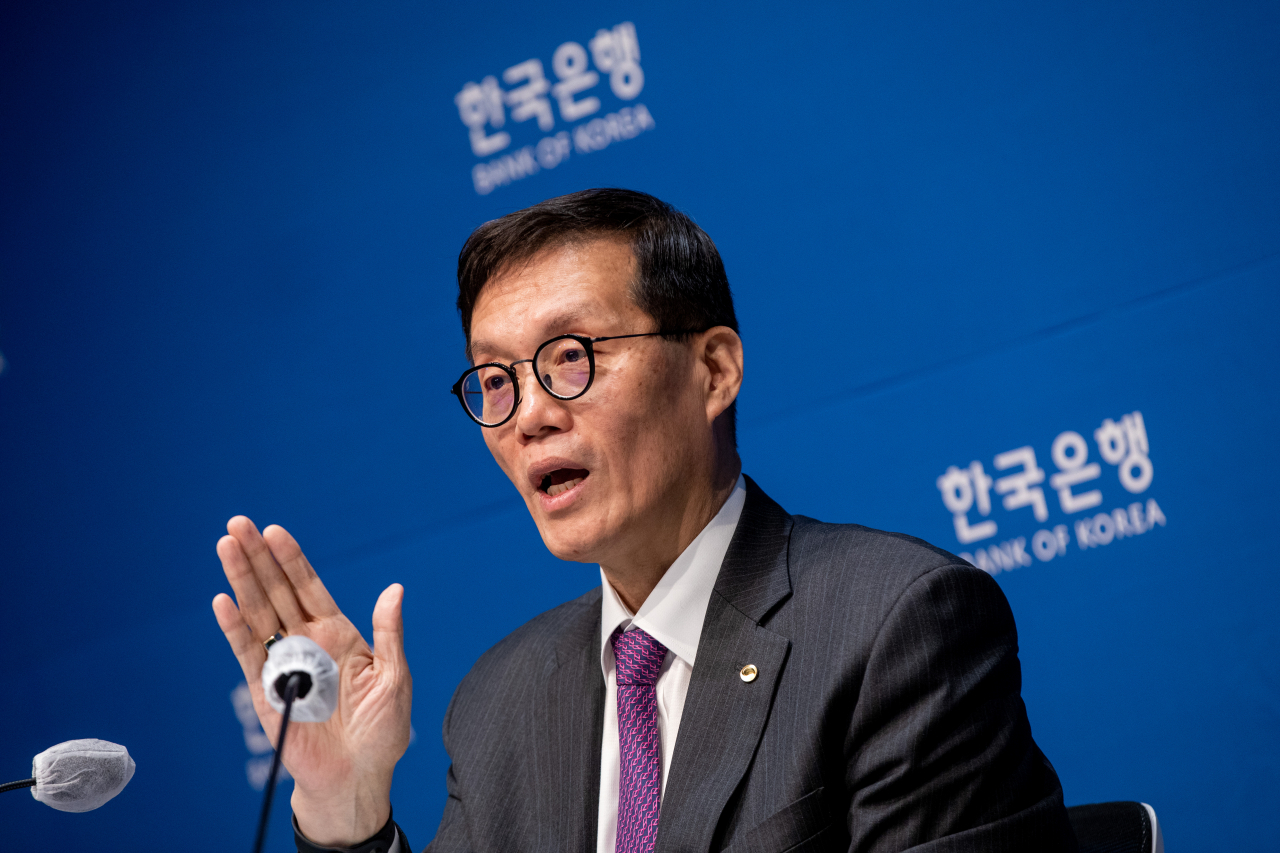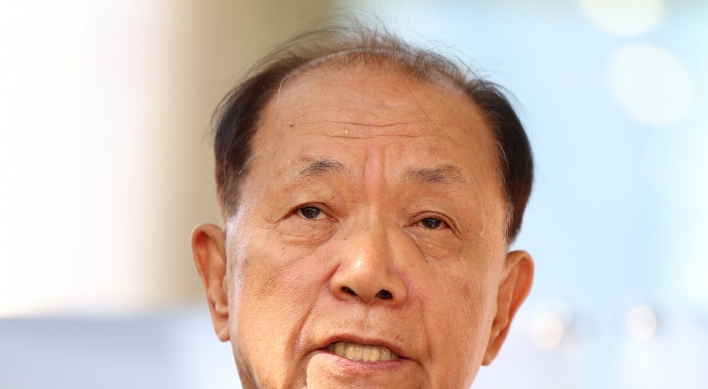BOK holds key rate steady, cuts 2024 growth outlook
By Im Eun-byelPublished : Nov. 30, 2023 - 15:18

The Bank of Korea kept the base rate unchanged at 3.5 percent for the seventh straight time on Thursday, unable to either cut or raise the rate as Korea stands the test of the shaky economy.
The six members of the monetary policy board unanimously voted for a rate freeze at the last rate-setting meeting held this year, according to BOK Gov. Rhee Chang-yong.
The BOK’s Monetary Policy Decision statement showed the board will “maintain a restrictive policy stance for a sufficiently long period of time until (it) is confident that inflation will converge on the target level” set at 2 percent, stressing the need for “higher for longer” rate stance.
“I am aware that market expectations on a rate cut cycle beginning from the US or the UK are growing,” Rhee said at a press briefing held Thursday. “But having conversations with other central bank chiefs, the expectations are definitely getting ahead of themselves.”
Rhee further explained that one of the board members who had called for the need to consider a rate cut in the near future at the previous meeting in October pulled back the suggestion Thursday.
The BOK’s hawkish stance partly stems from Korea’s snowballing household debts. Despite the high rates, the outstanding household credit for the third quarter reached 1,875.6 trillion won ($1.45 trillion).
In addition, inflation has been on a rebound. Though international oil prices have been on a decline in recent weeks, offloading the pressure on inflation, prices have yet to stabilize here.
Korea’s consumer price growth, a major gauge of inflation, has been on a rebound, staying in the 3 percent range for three consecutive months, 3.4 percent in August, 3.7 percent in September and 3.8 percent in October.
Last month, the figure even surpassed that of the US for the first time in six years, as price growth in the US remained at 3.2 percent, marking a gap of 0.6 percentage point with Korea.
With Thursday's rate freeze decision, Korea's key rate gap with the US was maintained at up to 2 percentage points, as the US key rate stands at 5.25-5.5 percent.
Despite the record-high rate differential, the Korean won has been gaining value against the US greenback amid growing expectations for the US Federal Reserve to drop its restrictive monetary tightening policy, easing pressure on the BOK.
The won-dollar currency rate has been fluctuating just below 1,300 won this month. It closed at 1,290 won on Thursday, in contrast to a high for the year of 1,349.5 won in September.
While maintaining the previous forecast that the Korean economy would expand by 1.4 percent this year, the BOK brought down the growth rate for next year from 2.2 percent to 2.1 percent.
Korea's economy, though on a slow recovery, has yet to fully gain traction. Though exports have recently been showing signs of a rebound, measures indicating the state of domestic industrial output, consumption and investment all dropped in October, data from Statistics Korea showed Thursday.
“While the growth rates of developed countries are expected to show an on-year fall next year, Korea is expected to show a larger growth in 2024,” Rhee said. "A 2.1 percent growth is not poor on an international level."
Slashing the growth rate, it raised the projection for price growth for this year from 3.5 percent to 3.6 percent, while inching up the speculation for next year from 2.4 percent to 2.6 percent. Yet, Rhee deemed Korea’s price growth as likely to meet the 2 percent target rate faster than the US.
"The projections are all conditional, but the trajectory shows Korea's inflation rate will come down to 2 percent by late 2024 or early 2025," Rhee said, explaining disinflation would largely depend on core inflation losing its steam. "For the US, the timeline would fall around at mid or late 2025."
Following the BOK's last rate decision of the year, the market will await the US Fed's Federal Open Market Committee meeting set to be held on Dec. 12-13, the last rate-setting meeting of the year for the US Fed.






![[KH Explains] No more 'Michael' at Kakao Games](http://res.heraldm.com/phpwas/restmb_idxmake.php?idx=644&simg=/content/image/2024/04/28/20240428050183_0.jpg&u=20240428180321)











![[Herald Interview] Mistakes turn into blessings in street performance, director says](http://res.heraldm.com/phpwas/restmb_idxmake.php?idx=652&simg=/content/image/2024/04/28/20240428050150_0.jpg&u=20240428174656)
